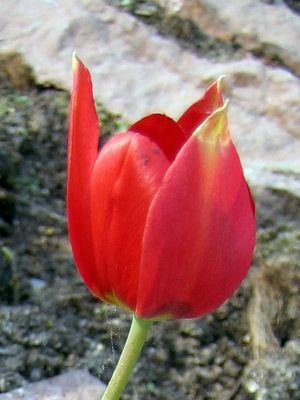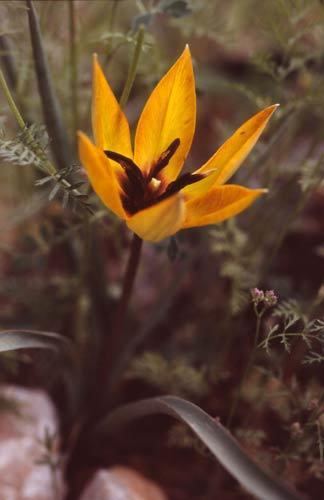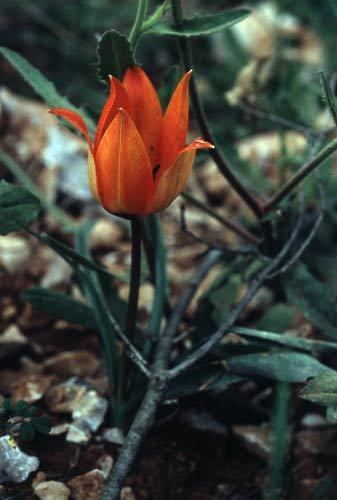Rank Species | Higher classification Tulip | |
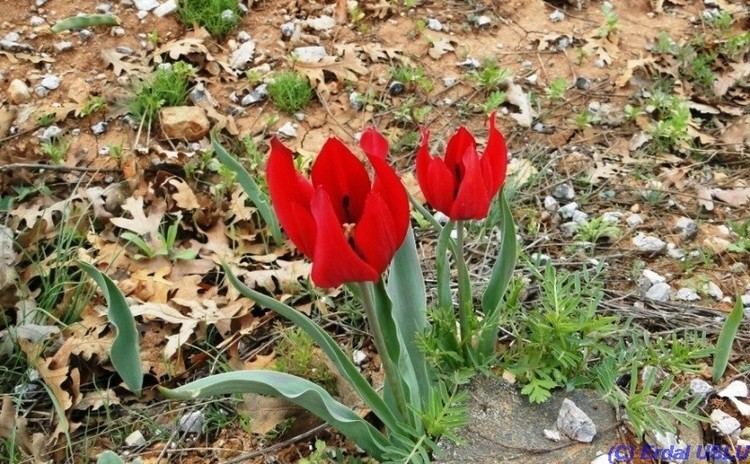 | ||
Similar Tulip, Liliaceae, Tulipa ostrowskiana, Tulipa montana, Tulipa biflora | ||
Tulipa armena, the Armenian tulip, is an Asian species of tulip native to Turkey, Iran, and South Caucasus.
Contents
Description
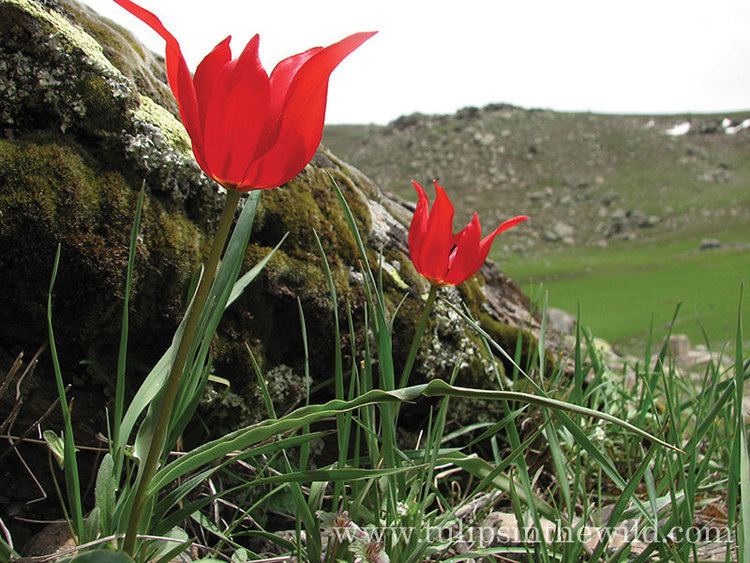
Tulipa armena is extremely variable. The bulb has a papery tunic that is not very hairy. The stems are between eight and 25 cm long, the 3-6 leaves are broad, scimitar shaped, hairy or smooth and often have wavy edges. They are greygreen, but with a red overlay. They can be up to 20 cm long. The large solitary flowers are cup- or bowlshaped and very variable. Some are red with a dark violet, black or dark green basal blotch, sometimes striped and mottled in yellow, others yellow, in the red form, sometimes the black basal blotch has a yellow border. The tepals are normally oval. The filaments are black or blaclish purple, the anthers yellow or black.
Tulipa armena is placed in the subgenus Tulipa. In Turkey, the subspecies lycica and armena are differentiated by the hairs on the bulb.
Tulipa armena is easily confused with Tulipa julia, which has a hairier tunic.
Habitat
The Armenian tulip is found from Northeast Turkey through Transcaucasia (Armenia, Azerbaijan and Georgia) to northwestern Iran. It grows on rocky mountain slopes between 1000- 2700m ASL and flowers between April and June. It also occurs on the Marmaris peninsula in Southwestern Turkey at much lower elevations, where it may have been introduced as an ornamental plant in Ottoman times.
It grows in steppe areas on alkalic soils with a high humus-content.
Synonyms
T. armena was first described by Edmund Boissier in 1859, the locus typicus is located in Northeast Turkey. Populations found in the Karabakh mountain range in Armenia and Azerbaijan have been called T. karabachensis, but this is regarded as a synonym of T. armena. Plants from Eastern Turkey and Northwest Iran with a hairy tunic and longer stems have been described as T. willmottiae Freyn. T. mucronata Fomin, T. karabachensis Grossh. pro parte, T. confusa Gabrielian may also be synonyms of T. armena. The name T. galatica has been used for the yellow variety without basal blotch. In contrast, Tulipa gumusanica has been confirmed as a separate species.
Uses
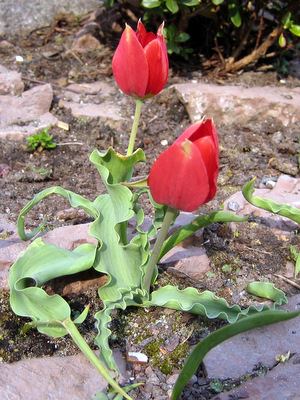
The Armenian tulip is used as a garden plant. It needs dry, hot summers and should be grown in freedraining soil and full sun. In England, it flowers in April.
